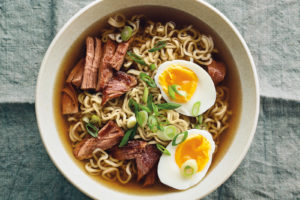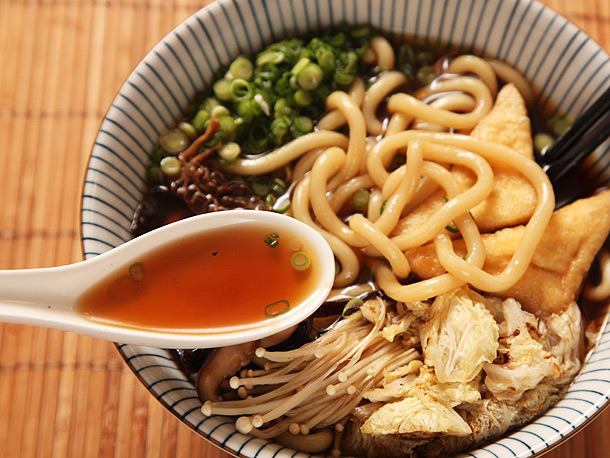Noodles are a staple in Japan. From pre-packaged ramen, to udon fast food chains, to hand-made soba, Japan has a wide range of noodle options. Because noodles form the base of many Japanese dishes, it’s pretty much a given you will be served a noodle dish at least at some point during your travels. So, knowing which noodle you’re eating, and how to eat it, will be a huge bonus for you.
Types of Japanese Noodles.
Japan has three main noodle types: Ramen, soba and udon, which are distinguished by their ingredients, texture and thickness. While these noodles can all be served in many different ways, each one is usually served in a particular fashion (for example, soba is often eaten cold).
Here is a quick guide to the basic differences between Japan’s 3 main noodle types:
Ramen – An egg noodle that has salt water added (called kansui), which gives it its yellow color. Ramen is typically served hot, in a meat or fish-based broth (called dashi). Ramen is usually served with various toppings such as scallions, egg and a meat, such as pork.
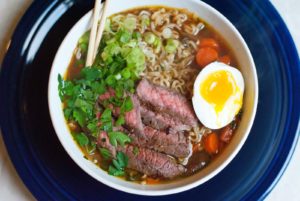
Soba – A buckwheat noodle, thinner than ramen and soba. High in protein, with a slightly rough texture. Soba is often served cold, sometimes with dipping sauce. The most famous soba noodles come from Nagano.
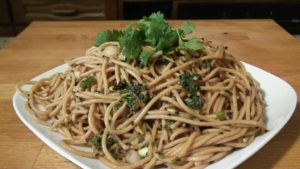
Udon– A wheat noodle that is renowned for its digestive properties. Udon noodles are typically thick and slightly chewy, and are usually served in hot dashi broth. Like ramen, udon comes with various toppings like scallions, egg and meat.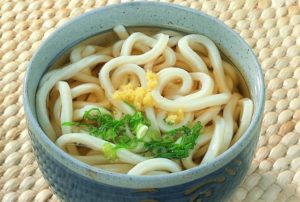
How to Eat Noodles in Japan.
Eating noodles in Japan isn’t complicated, but there are certain differences with how you eat them, compared to what you’re probably used to (when, say, you’re eating your mom’s chicken noodle soup). In fact, when eating noodles in Japan, you can actually do things you wouldn’t normally do, like:
Slurping
While most of us have been taught that slurping our food is a no-no, in Japan, this is perfectly acceptable and is not considered rude. In fact, slurping is a sign to your chef that you are enjoying your meal. Slurping also has a practical basis. Because food in Japan is typically served piping hot (and I mean HOT), slurping noodles helps cool them so they don’t burn your mouth. Slurping also helps prevent splashing (and believe me, when you eat noodles with chopsticks, there is going to be some splashing).
Picking Up Your Bowl to Eat and then Drink the Broth
Other than drinking leftover cereal milk after breakfast in the privacy of our own home (because come on, we all do that), picking up your bowl to drink is not socially acceptable for most of us. But in Japan, it’s perfectly fine. After you eat the noodles, you will usually find you’re left with a lot of broth. Instead of spooning it up, you can simply pick up your bowl and drink it, which is much more convenient (and therefore, very Japanese). Good news – you can also pick up your bowl to eat the noodles, so you’re not stretching the (very) long noodles from bowl to mouth making a huge mess. (So, use your dominant hand for the chopsticks/eating part and your other hand to lift the bowl towards your mouth.)
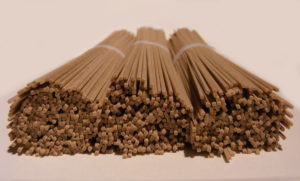
A Few Other Tips.
When eating noodles in Japan, taste the broth first with the special spoon they give you. Then eat the noodles, slurping to your heart’s content, which, by the way, is purely optional. Once you finish your noodles, lift the bowl and drink the broth. Be sure to finish all of your meal, as it’s not considered good manners to leave food uneaten (though I admit, it sometimes happens because portions in Japan are surprisingly enormous). Don’t forget to tell your host Gochisousama deshita! (It was a real feast!) when you’re finished.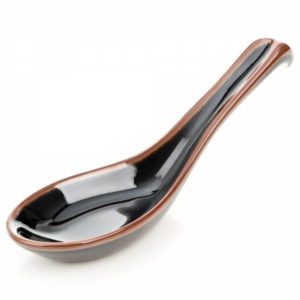
Where to Find Japanese Noodles.
So if you want an authentic Japanese meal, try ramen, soba or udon. You can find these noodles in some form in virtually every restaurant and convenience store (though I recommend going with the “real” stuff, not the pre-packaged versions). You will also see specialty shops (including many chains) serving just one noodle dish (with a wide range of topping options).
For ramen, check out Ippudo; for soba, look for Fuji Soba, and for udon check out Hanamaru. These shops are plentiful and known for their consistently delicious noodles. (And, bonus…noodles are budget friendly too!)
